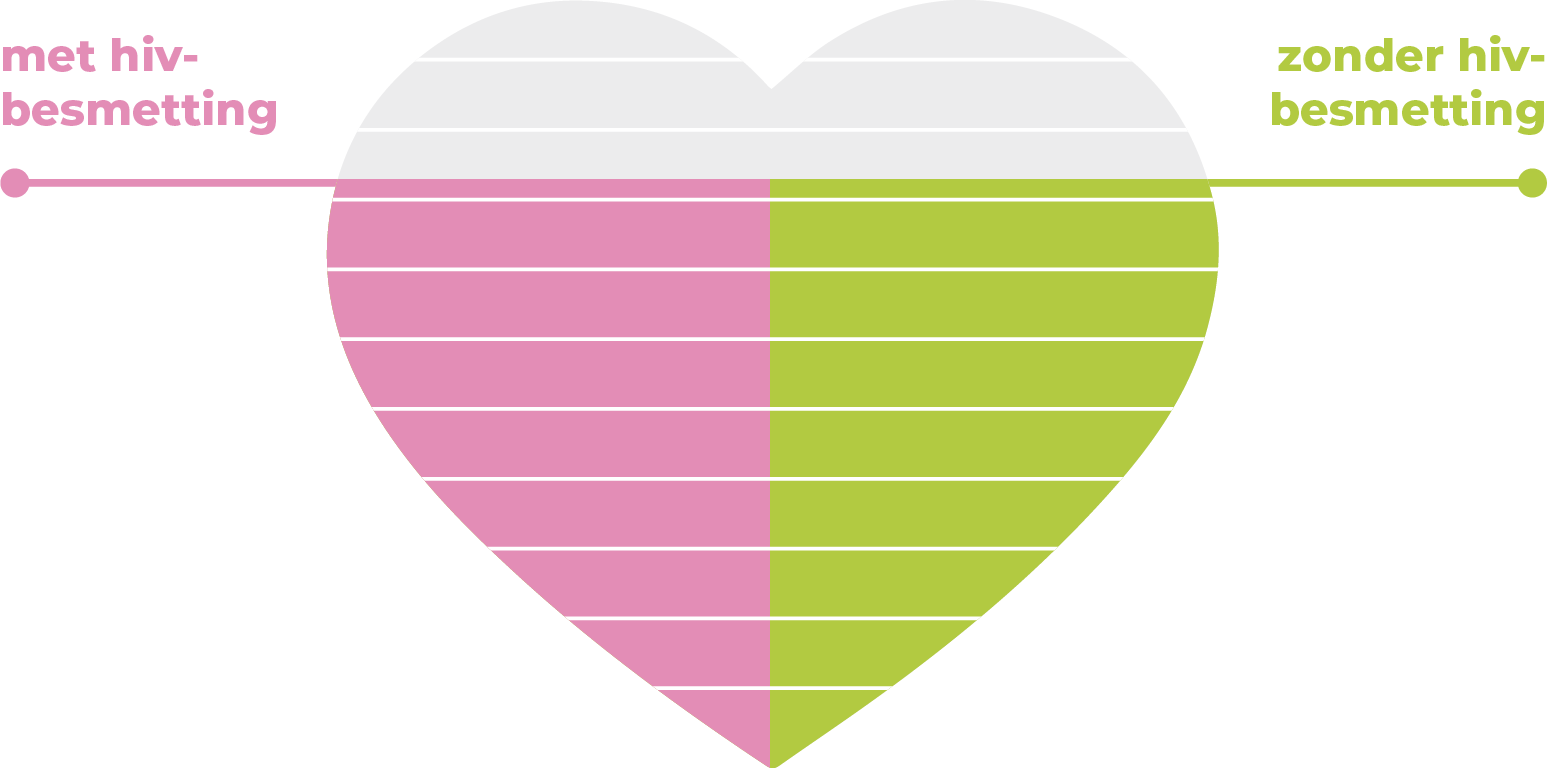

Do I have an HIV-indicator condition?
Recognising an HIV infection can be challenging. HIV infection can be present in the body and go unnoticed for years. Nevertheless, there are characteristics that are good for your doctor or yourself to think about in terms of HIV. These are called HIV indicator conditions. These conditions are more commonly seen in people with HIV than in people without HIV. These conditions may indicate an undiscovered HIV infection.
In this section of the website, you can look up different types of HIV indicator conditions, such as herpes zoster (shingles), tuberculosis or an STD (for example, chlamydia or gonorrhoea). Of course, if you have an HIV indicator condition, it does not necessarily mean that you will also have HIV. However, it is recommended in the guidelines and by the World Health Organisation that you should be tested for HIV. An HIV test is refunded via health insurance (and is therefore free of charge) if your own risk money for that year has been used. If you have not yet reached your own risk limit, the cost of the HIV test will be charged to your insurance account.
Do you find it difficult to ask your GP or specialist for an HIV test? If so, you can download a specific conversation card for each condition with tips on how to approach this conversation. You can take this card with you on your next visit to the doctor.
Geen resultaat gevonden voor ''
De door jou ingevulde aandoening komt bij ons niet voor als veelvoorkomende hiv-indicator aandoening. Twijfel je of je toch een hiv-infectie hebt opgelopen, bespreek dit dan met je (huis-) arts.
Vind je het moeilijk dit bespreekbaar te maken? Download dan het onderstaande gesprekskaartje.
title
is een hiv-indicator aandoening
Prevalentie van
%
Als de kans op een onderliggende hiv-infectie hoger is dan 0,1% dan is een hiv-test altijd aan te raden. Ongeacht je afkomst, leeftijd, seksuele voorkeur of geslacht.
Wist je dat een hiv-test wordt vergoed door je zorgverzekering?
(een test gaat wel af van je eigen risico)
TO
KNOW
FACTS ABOUT HIV AND AIDS
23.700
people in the Netherlands
living with HIV
1.730 of these
are unaware
of their underlying HIV infection

heterosexual
(worldwide)Most HIV positivepatientsbe between the |  |
 | In some diseases, there is a need always have an HIV test done, regardless of risk factors |
 | An earlier doesn't mean you don't now |
Life expectancy
is almost as high as that of people without HIV

A pregnant woman with HIV
cannot transfer the virus to her unborn child if she takes her medication properly |
No longer contagiousA well-treated HIV patient can develop HIV no longer transfer to another person |
HIV is a treatable diseaseand no longer deadly, but incurable |
The symptoms of HIVare very diverse and therefore difficult to identify. The symptoms of an acute HIV infection can resemble the flu |
PrEP & PEPare drugs that lower the risk of getting HIV |
HIV can now be treatedwith one pill once a day |
In the futurecan HIV possibly be treated with two injections every two months instead of taking one pill every day |
HIV treatmentis fully reimbursed by the health insurance (a test is deducted from your deductible) |

Research
HIV IS NOT NOT TRANS-FERRED
BY MEANS OF...
Insect bitesInsects are not carriers of the virus. They only take blood, they are unable to inject infected blood |
Toilet seatsHIV does not survive on surfaces and therefore cannot be transmitted through a toilet seat. In addition, the virus is not in feces either |
Kiss |
Share cutlery |
Touch each other |



